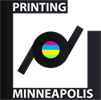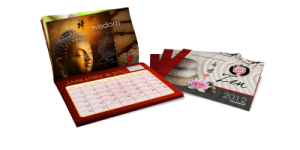Product Detail
Calendars
Description
Often focused more on design than text, calendars are a conspicuous way of keeping your brand message in front of your customers all year round without being too obvious. Giving away calendars to your prospects is a great marketing tool that promotes your brand as well as builds a generous image of you.
Our calendars are designed to center on your brand feature and is useful to your audience. You can pitch in your views to make your calendar marketing a success. A plus point in this method is that you have 12 different lines of approach for each month to market your business and products to your audience.
Printing Minneapolis cares about how your calendar can engage your customers. That is why we have the latest tools in printing technology to help you in your marketing endeavors. Our calendars are primarily bound in saddle stitching but you can request your own custom binding and stapling methods. Similarly you can opt for a front cover, back cover or both. On top of that, our printing services are flexible and come at budget friendly rates.
- Paper
- Color
- Coating
100# Gloss Text
You may be familiar with this type of stock from the covers of many popular magazines like People and Time.
This paper strikes a balance between thickness and foldability, while the glossy finish gives your text a professional appearance.
100# Uncoated Cover
You may be familiar with this type of stock from thick index cards, though the finish is much higher quality.
A very versatile stock, the uncoated finish is good when you don't want a slick and shiny look, while the firm 100# stock folds precisely.
100# White Linen Cover
You may be familiar with this type of stock from business cards or notecards with a subtle, woven, fabric-like finish.
This sturdy paper offers a unique non-glossy look enhanced with its subtle, woven linen finish.
100# Gloss Cover
You may be familiar with this type of stock from standard business cards.
Stiffer than 100# Gloss Text, this glossy finish cover stock offers sharp folds and a sturdy product for a very professional result.
80# Uncoated Smooth Text
You may be familiar with this type of stock from business stationary or typical letterhead.
This paper has a quality feel, folds easily, and is a good choice when you don't want a slick and shiny finish. Although typical business letterhead is a good example for the weight and feel of this stock, we do not recommend printing your letterhead on digital press.
70# White Linen Text
You may be familiar with this type of stock from business stationary or typical letterhead with a subtle, woven, fabric-like finish.
This thinner linen option offers a unique non-glossy look enhanced with its subtle, woven linen finish. Unlike linen finish letterhead stocks, this linen finish digital stock is not watermarked.
4/4
Full color on both sides of the sheet. This option can reproduce the range of colors you see in a typical photograph out of the standard 4 printing colors: cyan, magenta, yellow, and black. Typical examples of this are magazine covers and high-end catalogs.
4/1
Full color (cyan, magenta, yellow, and black as above) on the front and black on the back. A typical example of this is a flyer.
4/0
Full color (cyan, magenta, yellow, and black as above) on the front and no printing on the back. A typical example of this is a poster.
AQ 2 Sides
AQ is short for Aqueous Coating. This is a semi-gloss, environmentally friendly, water-based coating applied over the entire front and back of the printed piece. It provides additional gloss and protection, and it can be written on with a ballpoint pen.
Satin AQ 2 Sides
AQ is short for Aqueous Coating. This is a matte finish, environmentally friendly, water-based coating applied over the entire front and back of the printed piece. It reduces the gloss of the printing and it can be written on with a ballpoint pen.
UV 2 Sides
UV is short for Ultra Violet Light-Cured Coating. This is a high-gloss coating applied over the entire front and back of the printed piece. It is not recommended for products you need to write on after being printed.

